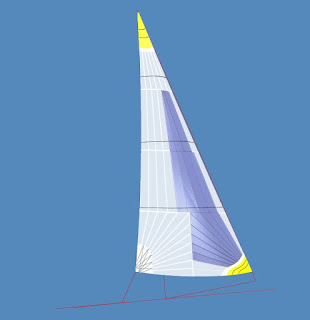 |
| View of the village from the bottom of the hill |
After our return from Orhaniye we decided to become tourists again. There is still so much to see
around Fethiye. One place I had wanted to visit is Kayakoy- village of stone. It is the village which
is the backdrop to the novel "Birds without Wings" by Louis de Bernieres.
After WW1 Greece expected to receive territory as the result of the break up of the Ottoman Empire.
Britain had negotiated this agreement with the Greeks during the war, but once the war ended all such agreements were broken. The collapse of the Ottomans and the rise of Ataturk and the new nation of Turkey meant that Greek ambitions in the region were to be fought. A war between Greece and Turkey was fought and in 1923 at the Treaty of Lausanne a peace was brokered.
The relationship between the Greeks and the Turks has been stormy. Cyprus is a good example. The Greek /speaking or Greek orthodox people had lived in Asia Minor for generations. Greek speaking people had settled this coast in ancient times. So a Greek presence has existed here for thousands of years.
When you read information at the site of Kayakoy here and why it happened, it is hard to distill the truth. It is confronting to imagine the impact of agreements made by politicians on the ordinary people.
The impact of forced repatriation of Greek orthodox people back to Greece must have been
horrendous. The Greeks refer to this as the "Catastrophe". In Turkish literature and other sources it is recorded that the governments of Greece and Turkey agreed to this movement of people- moslems back to Turkey, Greek orthodox back to Greece. Some documents even try to limit the numbers affected. One source says 180,000 Greeks and over 300,000 moslems. Another says 1.5million Greeks were forced to leave their homes in Turkey. It was suggested that the majority were forced to leave before the treaty was made. I found shards of china in homes. Were these the remains of a families dinner set lost in their forced removal?
At Kayakoy a local historian has written on a notice that no physical force was used to force the people to leave yet Turkish people would not live there because they feared that the Greeks had
poisoned the wells. How does this make sense? Was this more anti Greek propaganda or did the Greeks have good reason to want to make the perpetrators of their removal from their homes suffer?
Again trying to find the truth is difficult.
I have read about atrocities in the Greek -Turkish war on both sides. It seems that the Turkish source would have you believe the action was not based on race but religion. What does this really mean?
In 1932 the Ataturk led government passed laws which restricted the professions or work that Greek citizens in Turkey could engage in. Some Greeks had been allowed to stay in Istanbul after 1923. They were barred from from a series of 30 trades and professions from tailor to carpenter to medicine, law and real estate.
In 1955 the Istanbul Pogrom occurred leading to many Greeks leaving Turkey. So surely the forced removal of Greeks from Turkey in 1923 was targeting them as Greek- as the evidence of anti Greek racism in latter years would attest.
 Kayakoy is famous because a whole village was forced to leave Turkey and the buildings were just left to decay.
Kayakoy is famous because a whole village was forced to leave Turkey and the buildings were just left to decay.
You can see in the photos, houses , shops , streets, churches and chapels; a
ghost town or as the name suggests, a village of stone. I was amazed at how large it was; rows and rows of houses covering the whole hill side.
My friend in Australia Sophie told me that her family had been forced to leave Turkey after WW1, part of the"catastrophe". Her grandmother's experiences of this forced removal were horrific. It is no wonder that forgiveness has been hard if not impossible for many Greeks. In both countries different stories are told to explain or justify what happened in Turkey at this time
Now I have another research project: to find out what really happened in villages like Kayakoy and why it happened.





